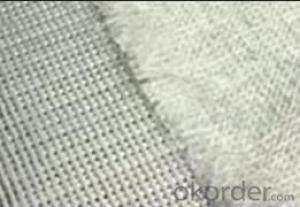Roving Fiberglass: The Unsung Hero of Composites
You’ve heard of carbon fiber, right? Sleek, strong, and oh-so-popular in the world of high-performance materials. But what about fiberglass? It’s the unsung hero of composites, the quiet workhorse that gets the job done without all the fanfare. Let’s dive into the world of fiberglass, its history, applications, and why it’s so special.
The Roots of Fiberglass: A Serendipitous Discovery
Fiberglass, or glass-fiber reinforced plastic (GFRP), was discovered quite by accident. It all started in the 1930s when a fellow named Russell Games Slayter was looking for a way to make airplanes lighter. He combined glass fibers with a plastic called ‘Pyroxil,’ and voila! A new material was born. It was lightweight, strong, and had the potential to revolutionize industries.
The Versatility of Fiberglass: From Boats to Bats
One of the most remarkable things about fiberglass is its versatility. It’s used in a wide range of applications, from boats and cars to sports equipment and construction materials. Fiberglass boats are known for their durability and ease of maintenance. It’s not just about the boats; fiberglass is also used in making baseball bats, which are lighter and can deliver more pop on contact.
The Strength of Fiberglass: A Material of Many Talents
Fiberglass is strong, but it’s not just about brute force. It’s about the combination of strength and flexibility that makes it so valuable. Fiberglass can be woven into fabrics, mats, or rovings, which can then be combined with resins to create composites with unique properties. These composites can be tailored to specific applications, making them incredibly versatile.
The Manufacturing Process: From Melt to Mold
The process of making fiberglass involves melting quartz sand, soda ash, and limestone at high temperatures. The molten mixture is then cooled and drawn into fine fibers. These fibers are woven or laid into mats and combined with a resin to form the composite material. The final product can be molded into various shapes and sizes, making it suitable for a wide range of applications.
The Environmental Impact: A Sustainable Choice
Fiberglass is not only strong and versatile; it’s also environmentally friendly. It’s made from abundant materials like sand, and it’s recyclable. This makes it an attractive option for industries looking to reduce their environmental footprint. Plus, the production process doesn’t involve harmful chemicals, which is a bonus for the planet.
The Future of Fiberglass: Innovation and Advancements
As technology advances, so does the use of fiberglass. Researchers are constantly looking for ways to improve its properties and applications. From making it more resistant to corrosion to incorporating it into new types of composites, the future of fiberglass looks bright. It’s a material that’s poised to play a significant role in the development of sustainable and high-performance products.
In Conclusion: Celebrating the Hero Within
Fiberglass may not get the same attention as carbon fiber, but it’s a hero in its own right. It’s a material that has proven its worth time and time again, across a variety of industries. So next time you’re out on the water in a fiberglass boat or swinging a fiberglass baseball bat, take a moment to appreciate the unsung hero that is fiberglass.

